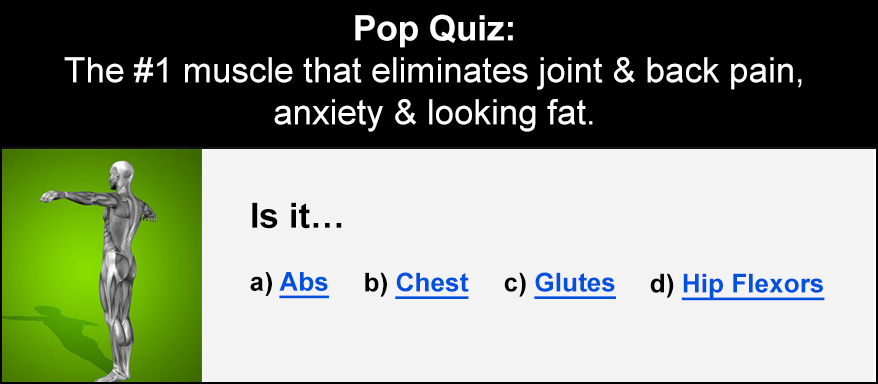Building strong shoulders means making them stable and able to handle physical activity without injury. This involves strengthening the muscles and joints to manage stress and reduce pain.
Strong shoulders are essential for upper body movement, preventing injuries like rotator cuff tears, and supporting good posture, which helps reduce neck and back pain.
The shoulder must balance mobility (how much it can move) and stability (how well it stays in place). (1)
Key benefits of having strong, stable shoulders include:
- Improved Posture: Strong shoulders help keep the spine aligned, reducing the chances of developing postural issues like forward head posture or rounded shoulders.
- Reduced Risk of Injury: By strengthening the muscles and stabilizing the shoulder joints, you decrease the likelihood of common injuries such as dislocations, strains, and tears.
- Enhanced Performance: Whether in sports, daily activities, or workouts, strong shoulders allow for better performance, enabling you to lift heavier weights, perform movements more efficiently, and maintain endurance.
Shoulder Exercises
1. Arm Circles

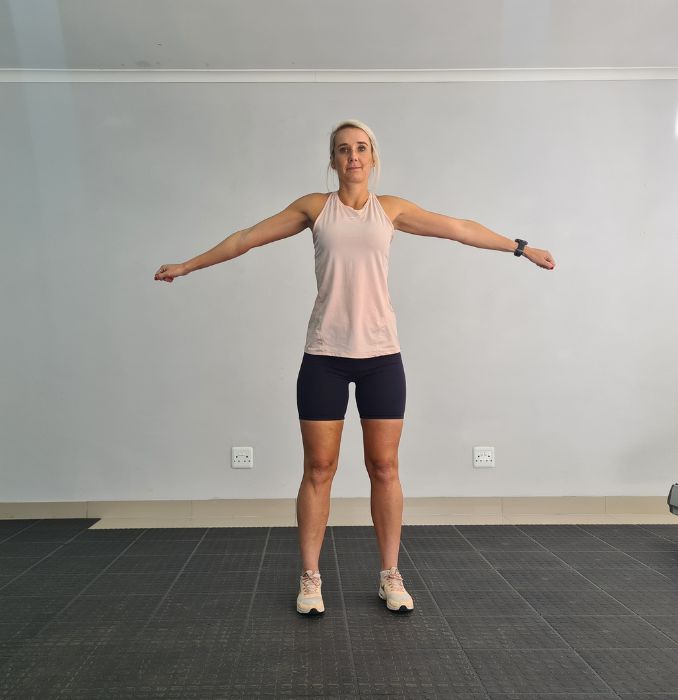

Begin in an upright standing position with your feet shoulder-width apart, maintaining good alignment with your head, shoulders, hips, and legs. Extend your arms out to the sides at shoulder level. Engage your core and start making small circles with your arms, gradually increasing the size of the circles. Perform circles in both forward and backward directions. Keep your movements smooth and controlled to effectively warm up the shoulders before more intense activities.
2. Shoulder Shrugs
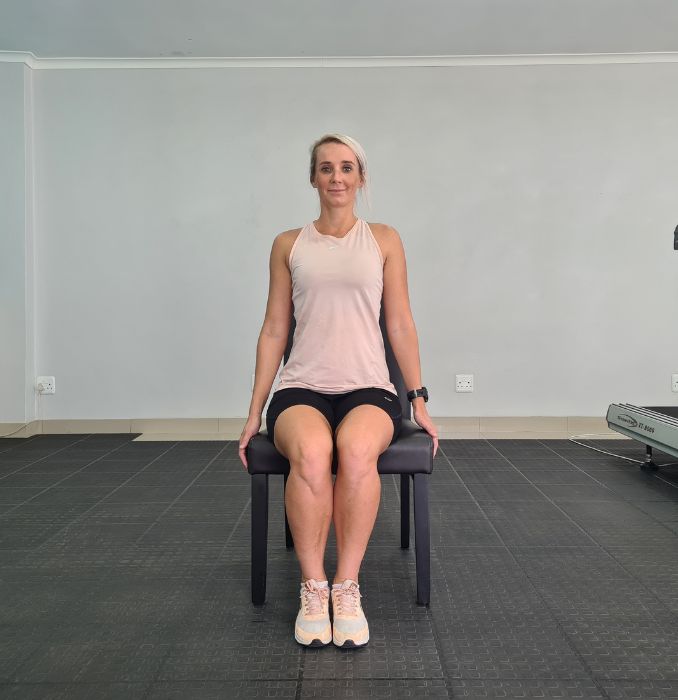

Begin in an upright sitting position on a chair, with your knees bent and feet flat on the floor. Maintain good alignment with your head, shoulders, and hips. Place your arms at your side. Engage your core. Raise your shoulders toward your ears as high as you can, then slowly lower them back down. Perform this movement slowly, focusing on squeezing your shoulders at the top. You can do this exercise with or without light weights to effectively warm up your shoulders and neck.
3. Wall Angels

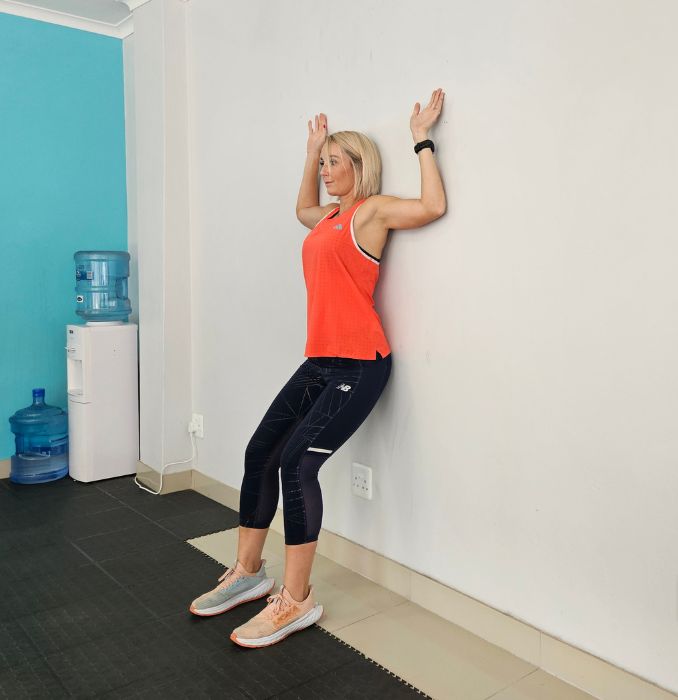
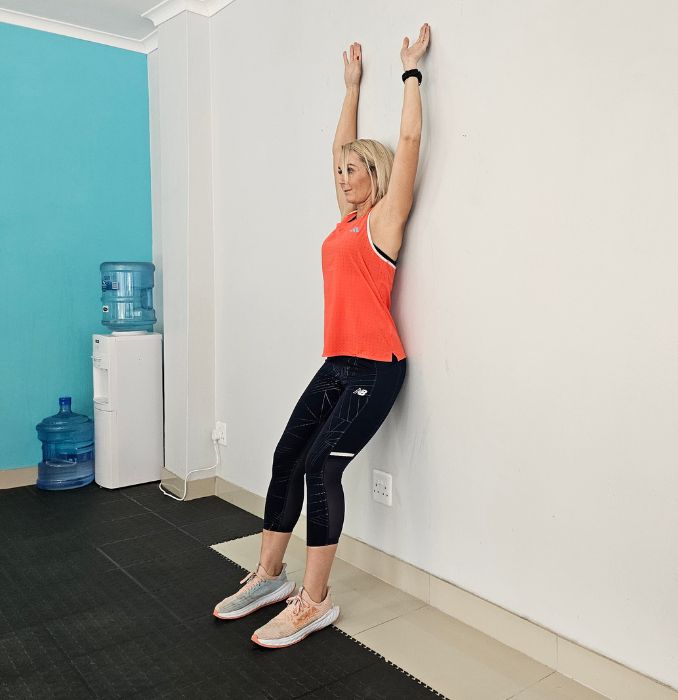
Begin in an upright standing position with your back against a wall, maintaining good alignment with your head, shoulders, hips, and legs. Press your lower back, upper back, and head into the wall. Engage your core. Raise your arms into a “W” position with your elbows bent at 90 degrees. Slowly slide your arms up into a “Y” position while keeping contact with the wall. Keep your core engaged, and avoid arching your lower back. This exercise helps improve shoulder mobility and posture by activating and stabilizing the muscles around the shoulder blades.
4. Scapular Push-Ups


Begin in a high plank position with your hands directly under your shoulders, maintaining good alignment with your head, shoulders, hips, and legs. Without bending your elbows, retract your shoulder blades by bringing them together, then protract them by pushing them apart. Keep your core tight and avoid sagging in your lower back. This subtle movement focuses on improving shoulder blade stability and prepares the shoulders for more intense movements.
5. Arm Crossovers

Begin in an upright standing position with feet shoulder-width apart, and maintain good alignment with your head, shoulders, hips, and legs. Engage your core. Extend your right arm across your chest at shoulder height, keeping it straight. Use your left hand to gently pull your right arm closer to your body, feeling a stretch in your shoulder. Hold the position for several deep belly breaths, in through your nose and out through your mouth. Relax and repeat this movement on the opposite side. This exercise helps warm up the shoulder joints, increases flexibility, and promotes circulation.
Understanding Shoulder Anatomy
1. Key Muscles Involved in Shoulder Stability
Understanding which muscles contribute to shoulder stability can help in treating and preventing shoulder injuries, particularly in cases of rotator cuff degeneration. (2)
a. Rotator Cuff Muscles
- Comprising four key muscles (supraspinatus, infraspinatus, teres minor, and subscapularis), these muscles play a crucial role in stabilizing the humeral head within the shoulder joint during movement.
b. Scapular Muscles
- Serratus Anterior: Helps in protracting the scapula, ensuring it stays close to the rib cage.
- Rhomboids and Trapezius: Work together to retract and stabilize the scapula during shoulder movements.
2. Common Shoulder Injuries
- Rotator Cuff Tears: Often caused by repetitive overhead activities, these tears can lead to pain and weakness in the shoulder. The stability of the shoulder joint (glenohumeral joint) is important for preventing injuries like rotator cuff tears. (2)
- Tendinitis: Inflammation of the shoulder tendons can occur due to overuse or strain, causing pain and stiffness.
- Shoulder Bursitis: This condition involves inflammation of the bursa (a small fluid-filled sac) in the shoulder, often leading to pain and swelling, especially during arm movements.
- Shoulder Impingement: Occurs when the rotator cuff tendons are compressed during shoulder movements, often resulting in pain and limited range of motion.
- Shoulder Dislocations: Typically resulting from traumatic injuries, dislocations can lead to instability and recurrent issues if not properly rehabilitated.
3. Safe Recovery from Shoulder Injuries
Guidelines:
- Rest and Ice: Start by resting your shoulder and applying ice to help reduce swelling.
- Gentle Movement Exercises: Begin with easy exercises for strong shoulders to help improve flexibility without causing pain.
- Strengthening Exercises: Once the pain decreases, slowly add exercises for strong shoulders that strengthen the rotator cuff and nearby muscles.
- Functional Exercises: As your shoulder gets stronger, include exercises that mimic everyday activities or sports movements.
Conclusion

Building strong, stable shoulders is essential for good posture and overall performance. Strong shoulders reduce the risk of injuries, improve your ability to lift and reach, and help maintain proper alignment of your spine. By incorporating simple exercises for strong shoulders and understanding shoulder anatomy, you can protect your shoulders and enhance your daily activities. Focus on strength and flexibility to keep your shoulders healthy and functioning well throughout your life.





